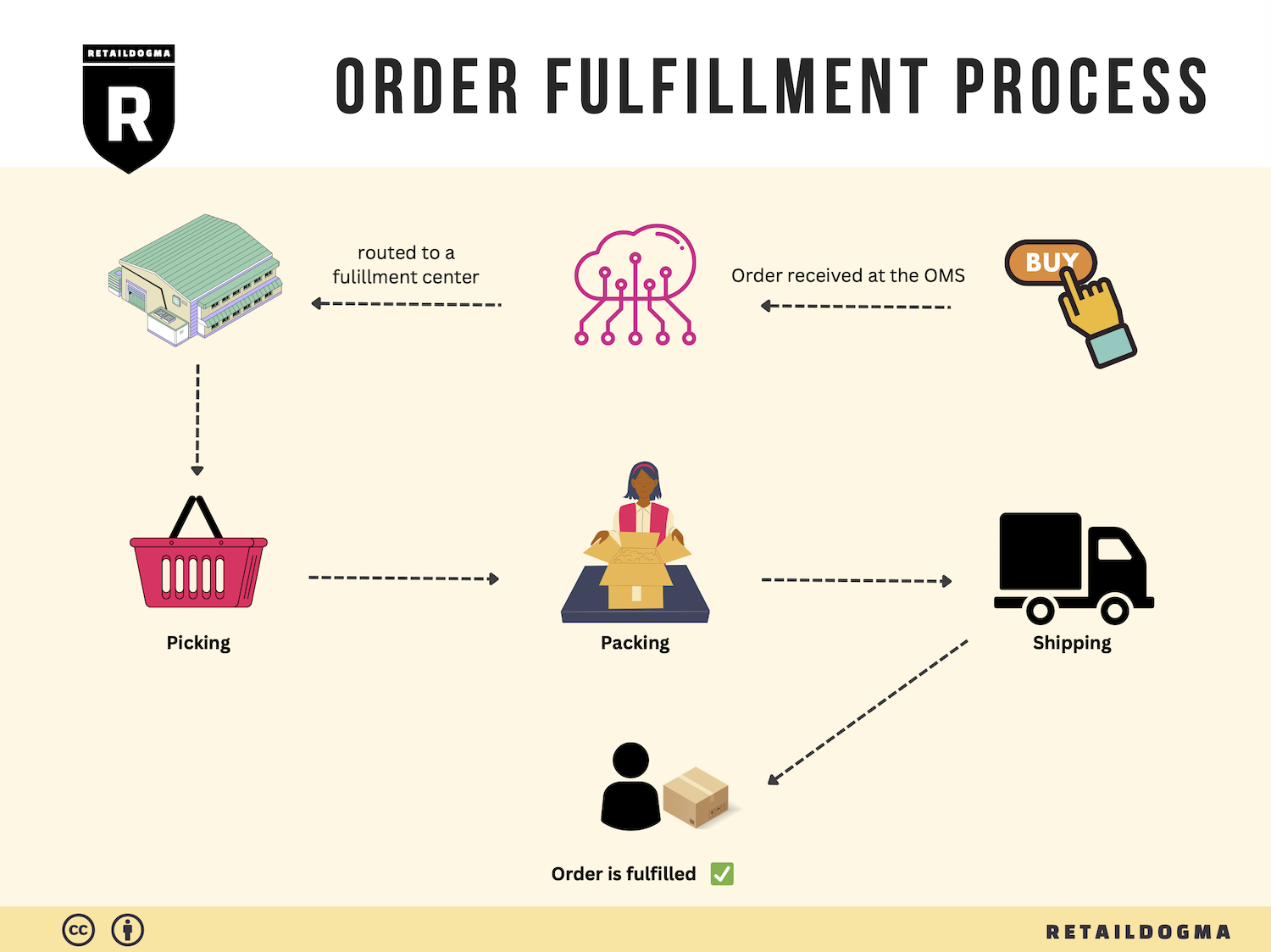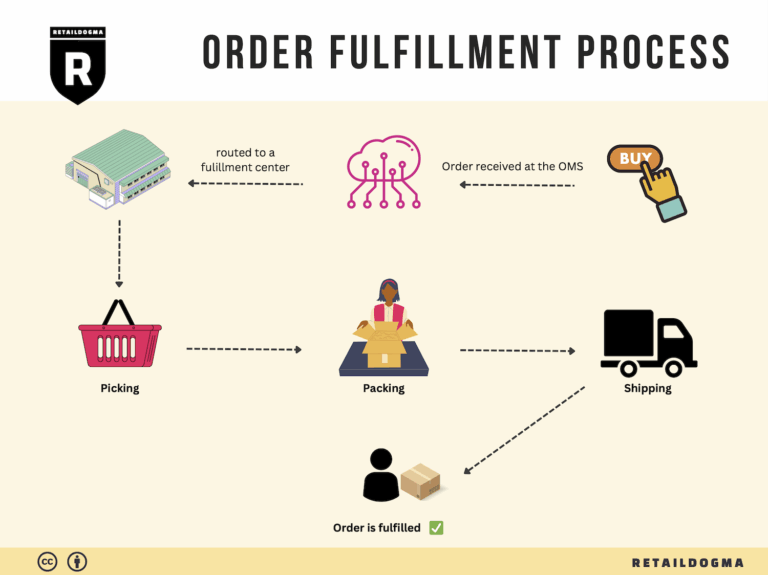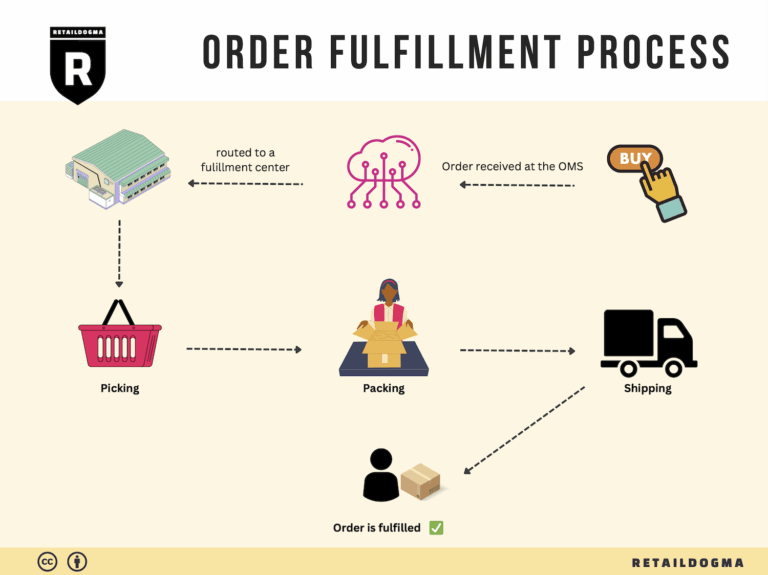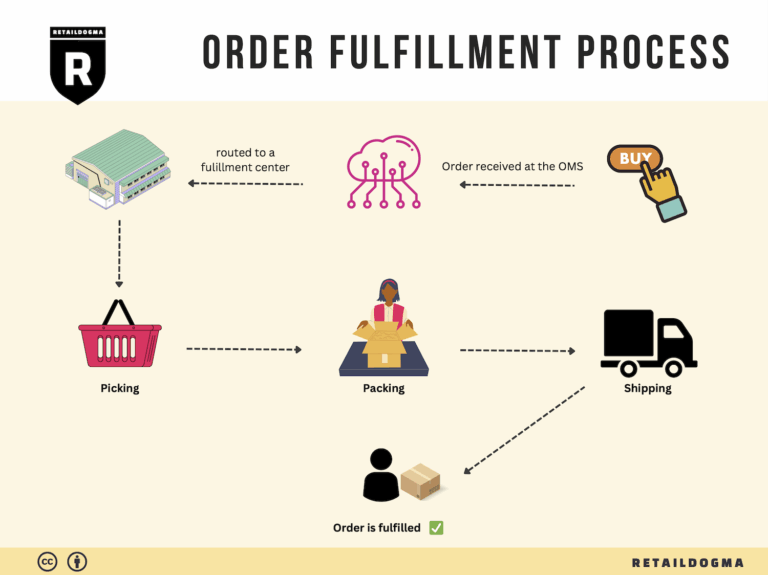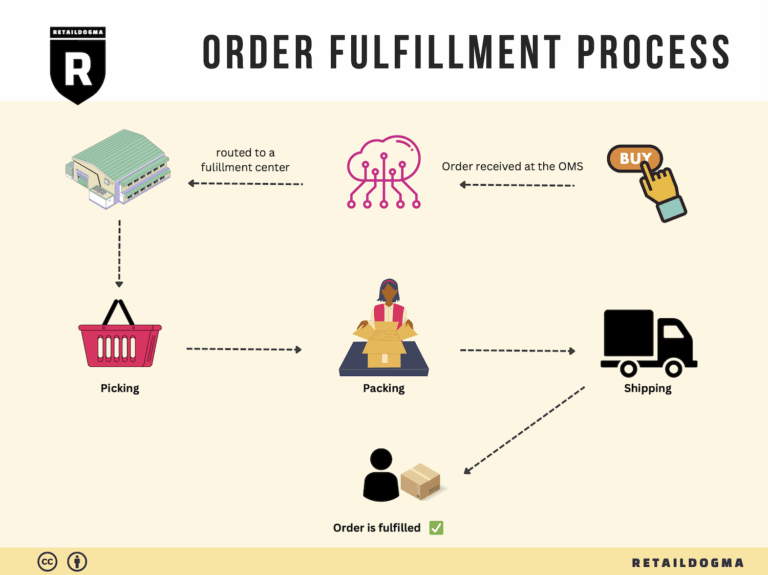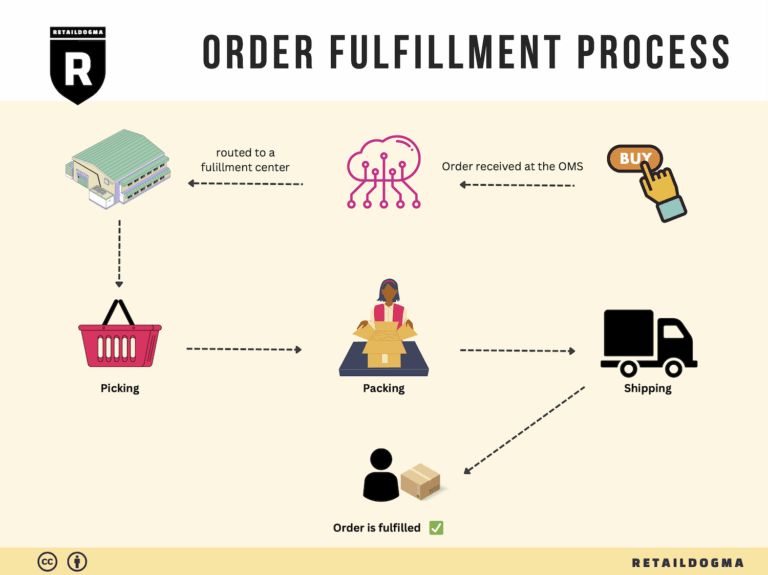How Order Fulfillment Works: A Step-by-Step Guide for Businesses
What is E-commerce Fulfillment? An Introduction for Growing Businesses
Understanding the Fulfillment Process
As an e-commerce business owner, you may find yourself grappling with the overwhelming task of packing and shipping orders. Managing inventory, ensuring timely deliveries, and handling customer inquiries can easily become a full-time job in itself. This often leads to a critical question: how can you streamline your operations to focus on growth rather than getting bogged down in logistics?
At its core, e-commerce fulfillment is simply the process of getting a product from your warehouse to your customer’s doorstep. This involves several key steps, including inventory management, order processing, packing, shipping, and handling returns. As your business grows, the complexities of fulfillment can multiply, making it essential to understand your options and find the right solutions that fit your needs.
In this guide, we will explore various fulfillment models that can aid in scaling your business effectively. You’ll learn about third-party logistics (3PL), Fulfillment by Amazon (FBA), and other options that allow you to offload some or all of your logistics operations. Each model has its own advantages and challenges, and understanding these nuances can help you make informed decisions.
We will also cover the core services associated with e-commerce fulfillment, including inventory management, order processing, shipping options, and returns management. Knowing what services are available will help you identify which aspects of fulfillment you need assistance with, enabling you to focus on what you do best—growing your business.
Choosing the right fulfillment partner is crucial for your operational success. This guide will outline the key factors to consider when evaluating potential partners, such as their experience, technology capabilities, and customer service.
Finally, we’ll delve into pricing structures, helping you understand the costs associated with various fulfillment models. This knowledge will empower you to create a budget that aligns with your business goals while ensuring you can deliver exceptional service to your customers.
The goal of this guide is to empower you with the knowledge necessary to make smart decisions about your logistics. By understanding the fulfillment landscape, you can position your business for sustained growth and success in the competitive e-commerce marketplace.
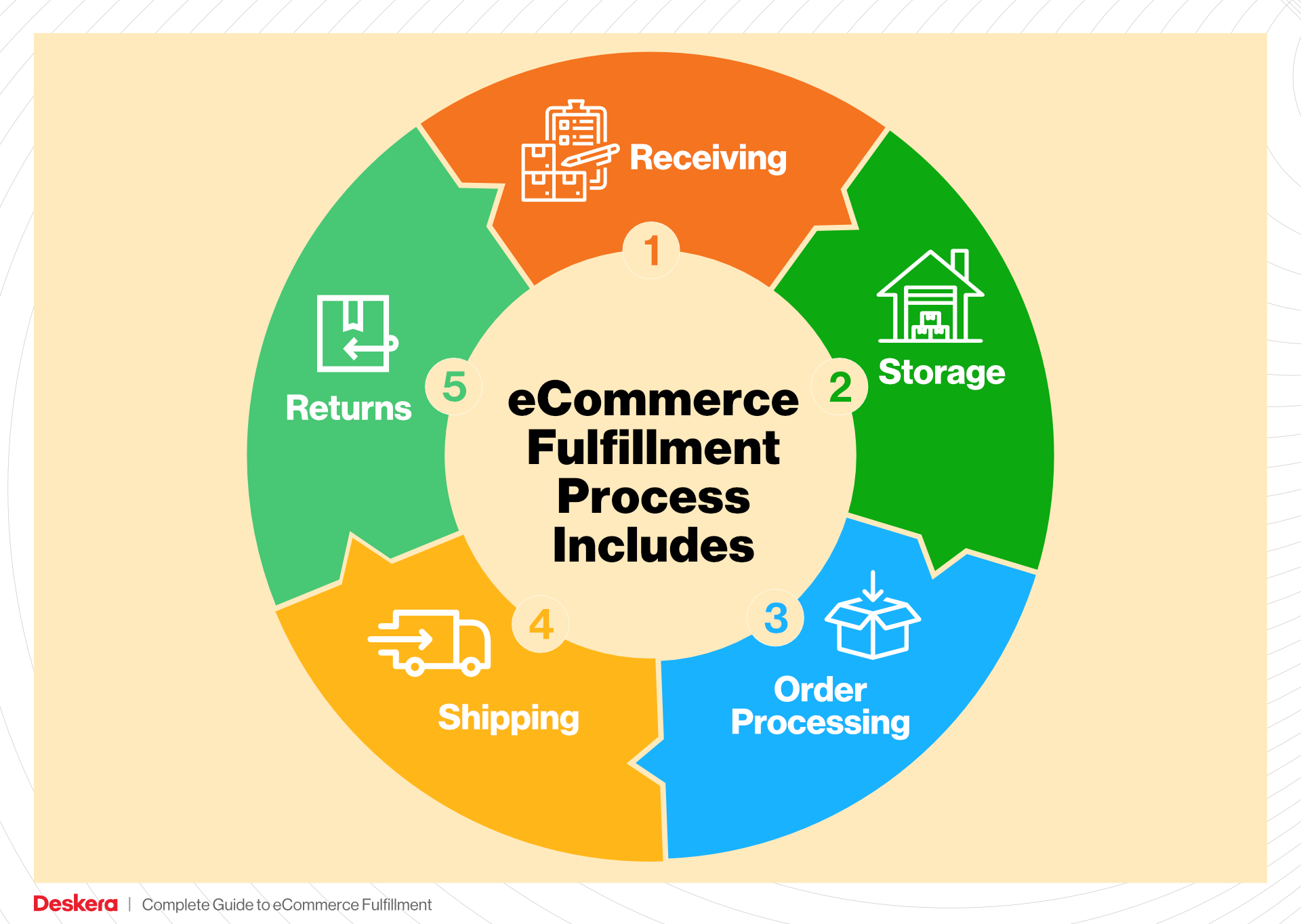
What You’ll Learn In This Guide
- What is E-commerce Fulfillment? An Introduction for Growing Businesses
- The Order Fulfillment Process: From ‘Buy’ Button to Customer’s Door
- Comparing Fulfillment Models: In-House vs. 3PL vs. Dropshipping
- A Deep Dive into Amazon FBA: Pros, Cons, and Who It’s For
- Core Services Offered by Fulfillment Centers
- How to Choose a Fulfillment Partner: A 6-Point Checklist
- Understanding Fulfillment Pricing: A Breakdown of Common Fees
- Frequently Asked Questions (FAQs) about Fulfillment
- Conclusion: Is Outsourcing Fulfillment the Right Move for Your Business?
- Important Disclaimer
The Order Fulfillment Process: From ‘Buy’ Button to Customer’s Door
1. Receiving Inventory
The first step in the order fulfillment process is receiving inventory. When goods arrive at your warehouse or fulfillment center, they must be checked against purchase orders to ensure accuracy and quality. This step involves inspecting the shipment for damages, verifying quantities, and categorizing products based on their SKU (Stock Keeping Unit).
Importance: This step is crucial because accurate inventory management begins with the correct intake of products. Any discrepancies at this stage can lead to stockouts or overstock situations, which can negatively impact customer satisfaction and operational efficiency.
Key Term: SKU (Stock Keeping Unit) – A unique identifier for each distinct product and service that can be purchased. It helps in tracking inventory levels and managing stock more effectively.
2. Warehouse Storage
Once inventory has been received and verified, the next step is warehouse storage. Products are organized and stored in designated locations within the warehouse. Efficient storage strategies, such as the use of bin locations or pallet racking systems, are essential for maximizing space and ensuring that items are easily accessible.
Importance: Proper storage not only optimizes warehouse space but also reduces the time taken to retrieve products during the order picking process. A well-organized warehouse can significantly enhance operational efficiency and speed up the fulfillment process.
Key Term: FIFO (First In, First Out) – An inventory management method where the oldest stock is sold first. This is particularly important for perishable goods or items with a limited shelf life, ensuring that products are sold before they expire.
3. Order Picking
Order picking is the process of retrieving products from the warehouse to fulfill customer orders. This step typically involves creating a pick list, which is a document or digital tool that outlines the items to be collected for each order. Employees or automated systems then navigate the warehouse to gather the specified items.
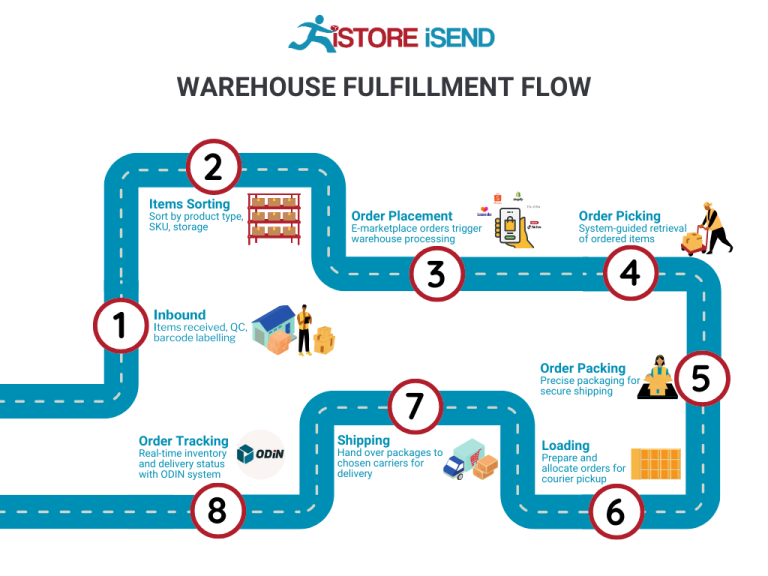
Importance: Efficient order picking is critical to maintaining order accuracy and fulfillment speed. Errors during this step can lead to incorrect shipments, resulting in returns and dissatisfied customers. Streamlining this process through best practices, such as batch picking or zone picking, can enhance productivity.
Key Term: Pick List – A list generated from the order management system that outlines the items and their locations in the warehouse, guiding the pickers in gathering products for each order.
4. Order Packing
After items have been picked, they move to the order packing stage. Here, products are carefully packed into boxes or containers, often accompanied by packing slips or invoices. This step may also involve selecting appropriate packaging materials to ensure that items are protected during transit.
Importance: Effective packing is vital for preventing damage during shipping and ensuring that the customer receives their order in good condition. Additionally, well-packed orders can improve shipping efficiency and reduce costs associated with returns due to damage.
Key Term: Packing Slip – A document included in the package that lists the items being shipped, serving as a receipt for the customer and a checklist for the fulfillment team to ensure all items are included.
5. Shipping & Delivery
The final step in the order fulfillment process is shipping and delivery. Once orders are packed, they are labeled and handed over to a carrier for delivery. Businesses must choose the right shipping options based on factors like cost, delivery speed, and customer preferences. Tracking systems are often employed to provide customers with real-time updates on their order status.

Importance: Timely shipping and reliable delivery are critical for customer satisfaction. A positive delivery experience can lead to repeat business and customer loyalty, while delays or issues can harm the brand’s reputation.
Key Term: Last-Mile Delivery – The final step in the shipping process, where the package is delivered from the transportation hub to the final destination. This step is crucial as it significantly impacts the customer’s overall experience.
By understanding and optimizing each step of the order fulfillment process, e-commerce businesses can enhance operational efficiency, reduce costs, and ultimately deliver a superior customer experience.
Comparing Fulfillment Models: In-House vs. 3PL vs. Dropshipping
Comparing Fulfillment Models
| Model | Who Handles Inventory | Best For (Business Stage) | Key Advantage | Key Disadvantage |
|---|---|---|---|---|
| In-House Fulfillment | The business itself | Established businesses with stable demand | Greater control over inventory and shipping | Higher upfront costs and operational complexity |
| Third-Party Logistics (3PL) | An external logistics provider | Growing businesses looking to scale quickly | Flexibility and access to expertise and technology | Less control over inventory and potential service variability |
| Dropshipping | Supplier or manufacturer | Startups or businesses with limited capital | Low initial investment and minimal risk | Lower profit margins and potential quality control issues |
In-House Fulfillment
In-house fulfillment involves managing the entire inventory and shipping process internally. This model is typically suited for established businesses that have a stable demand and are ready to invest in their own logistics capabilities. The key advantage of in-house fulfillment is the level of control it offers. Businesses can oversee every aspect of the fulfillment process, from inventory management to shipping, allowing for tailored customer experiences and direct feedback loops. However, the disadvantages are significant; maintaining an in-house operation often requires considerable upfront investment in warehousing, staff, and technology. Furthermore, as demand fluctuates, businesses may struggle with operational complexities, including staffing levels and inventory management, leading to inefficiencies and increased costs.
Third-Party Logistics (3PL)
Third-party logistics (3PL) providers offer a solution for businesses looking to scale efficiently without the burden of managing their own logistics. This model is particularly beneficial for growing businesses that require flexibility and expertise in handling logistics. 3PLs typically have established warehousing and transportation networks, allowing companies to quickly adapt to changing market demands without investing heavily in infrastructure. One of the main advantages of using a 3PL is access to advanced technology and logistics expertise, which can lead to improved operational efficiencies and reduced shipping times. However, a notable disadvantage is the loss of direct control over inventory and fulfillment processes, which can lead to variability in service quality and potential misalignment with brand standards. Businesses must carefully choose a 3PL partner that aligns with their operational goals and customer service expectations.
Dropshipping
Dropshipping is a fulfillment model where the retailer does not hold inventory; instead, orders are fulfilled directly by a supplier or manufacturer. This model is ideal for startups or businesses with limited capital, as it requires minimal upfront investment. The key advantage of dropshipping is the low risk involved; businesses can sell products without the burden of inventory management or upfront purchasing costs. This allows for a wide product range without the financial strain. However, dropshipping comes with significant disadvantages, including lower profit margins and potential quality control issues. Since the retailer relies on suppliers for product quality and shipping, any issues on the supplier’s end can directly impact the retailer’s reputation. Additionally, the lack of inventory control can lead to stockouts and delays, which can frustrate customers and lead to lost sales.
In conclusion, each fulfillment model has its unique advantages and disadvantages that must be carefully considered in the context of the business’s goals, stage of growth, and available resources. Understanding these models allows e-commerce businesses to make informed decisions that align with their operational capabilities and customer expectations, ultimately leading to more successful fulfillment strategies.
A Deep Dive into Amazon FBA: Pros, Cons, and Who It’s For
Understanding Fulfillment by Amazon (FBA)
Fulfillment by Amazon (FBA) is a service that allows e-commerce sellers to store their products in Amazon’s fulfillment centers. Amazon takes care of storage, packaging, shipping, and customer service for these products. This service enables sellers to tap into Amazon’s vast logistics network, providing a seamless experience for customers and allowing sellers to scale their operations quickly.
How FBA Works
-
Setup and Product Listing: Sellers create an Amazon seller account and list their products on the Amazon marketplace. They can choose to use FBA for all or some of their products.
-
Shipping Inventory to Amazon: Sellers ship their products to Amazon’s fulfillment centers. They must adhere to Amazon’s guidelines regarding packaging and labeling.
-
Storage: Once received, products are stored in Amazon’s warehouses until sold. Amazon manages the inventory, ensuring that products are organized and easily accessible.
-
Order Processing: When a customer places an order, Amazon picks, packs, and ships the product on behalf of the seller. This includes handling all aspects of the shipping process, such as tracking and delivery.
-
Customer Service and Returns: Amazon provides customer service for FBA orders, handling inquiries, and managing returns. This allows sellers to focus on other aspects of their business.
-
Payments: After the sale, sellers receive payments minus Amazon’s fees. The fees cover storage, fulfillment, and additional services provided by Amazon.
Pros of Using FBA
1. Prime Eligibility
One of the most significant advantages of FBA is that it makes products eligible for Amazon Prime. Prime members often prefer to shop for items that qualify for free two-day shipping, which can significantly increase sales potential for sellers.
2. Customer Trust
Amazon is synonymous with reliability and customer service. By using FBA, sellers can leverage Amazon’s reputation, which can enhance customer trust in their products. This is particularly beneficial for new sellers who may not yet have an established brand presence.
3. Multi-Channel Fulfillment
FBA isn’t limited to just Amazon sales. Sellers can use FBA to fulfill orders from their own websites or other marketplaces. This multi-channel fulfillment capability allows businesses to streamline their logistics while providing consistent service across platforms.
4. Scalability
FBA allows businesses to scale quickly without the need to invest heavily in logistics infrastructure. Sellers can focus on marketing and product development, while Amazon handles the complexities of order fulfillment.
5. Advanced Logistics
Amazon has developed sophisticated logistics and inventory management systems. By utilizing FBA, sellers benefit from Amazon’s expertise in shipping, tracking, and managing returns, which can improve operational efficiency.
Cons of Using FBA
1. High Fees
FBA comes with various fees, including storage fees and fulfillment fees. These costs can add up quickly, particularly for sellers with low margins or those holding large amounts of inventory. It’s essential to calculate these fees when determining product pricing and overall profitability.
2. Strict Inventory Rules
Amazon has stringent rules regarding inventory management, including storage limits and restrictions on certain products. Sellers must ensure they comply with these regulations to avoid penalties or account suspensions.
3. Commingling Risks
FBA products are commingled, meaning that items from different sellers may be stored together. This can lead to issues where a seller’s products are replaced with defective or damaged items from another seller, impacting customer satisfaction and brand reputation.
4. Limited Control Over Fulfillment
While FBA provides convenience, sellers relinquish control over the fulfillment process. This can lead to challenges in managing customer experiences, such as shipping times and packaging quality.
5. Inventory Management Challenges
Sellers must maintain optimal inventory levels at Amazon’s warehouses to avoid storage fees for excess inventory or stockouts that can lead to lost sales. This requires careful planning and forecasting.
Who is FBA Best For?
FBA is particularly well-suited for:
- Small to Medium-Sized Businesses: Those looking to scale quickly without investing heavily in infrastructure.
- Brands with High Turnover Products: Sellers with fast-selling items can benefit from Amazon’s logistics to fulfill orders efficiently.
- New Sellers: Entrepreneurs who are just starting and need to establish credibility and trust with customers can leverage Amazon’s reputation.
- Sellers with Limited Logistics Experience: Those who may not have the expertise or resources to manage fulfillment can focus on product development and marketing while Amazon handles logistics.
- Multi-Channel Sellers: Businesses selling on multiple platforms can streamline their operations by using FBA to fulfill orders across channels.
In conclusion, Fulfillment by Amazon offers a powerful solution for e-commerce sellers looking to enhance their logistics capabilities and expand their reach. However, potential users must weigh the benefits against the associated costs and challenges to determine if FBA aligns with their business goals.
Core Services Offered by Fulfillment Centers
Inventory Management & Warehousing
Effective inventory management and warehousing form the backbone of any successful fulfillment center. This service encompasses the storage, organization, and tracking of products within a warehouse environment. Fulfillment centers utilize advanced Warehouse Management Systems (WMS) to streamline these processes, ensuring that inventory levels are optimized, stock is accurately counted, and products are easily retrievable.
Benefits:
1. Real-Time Visibility: E-commerce businesses gain access to real-time inventory data, allowing for informed decision-making regarding restocking and inventory allocation. This reduces the risk of stockouts or overstock situations.
2. Space Optimization: Fulfillment centers are designed to maximize storage efficiency, utilizing techniques such as vertical storage and strategic shelving to minimize costs associated with excess space.
3. Scalability: As businesses grow, fulfillment centers can quickly adapt to increased inventory demands without the need for additional investment in storage facilities. This flexibility is essential for e-commerce brands experiencing seasonal spikes in demand.
Pick and Pack Services
Pick and pack services involve the process of selecting (picking) items from inventory and preparing (packing) them for shipment to customers. This service is crucial in ensuring that orders are filled accurately and promptly. Fulfillment centers often employ automated systems and skilled personnel to enhance the speed and efficiency of this process.
Benefits:
1. Accuracy and Speed: Fulfillment centers utilize technology to reduce picking errors and ensure that the right products are packed for shipment. This enhances customer satisfaction and minimizes the costs associated with returns and re-shipments.
2. Customization: Many fulfillment centers offer tailored packing solutions, such as branded packaging or special handling for fragile items. This personalization can enhance the customer experience and reinforce brand identity.
3. Cost-Effectiveness: By outsourcing pick and pack services, e-commerce businesses can save on labor costs and operational overhead, allowing them to focus on core business functions such as marketing and product development.
Kitting and Assembly
Kitting and assembly services involve combining multiple products into a single package or preparing items for sale as a cohesive unit. This can include assembling gift sets, creating promotional bundles, or preparing products for subscription services. Fulfillment centers equipped with kitting capabilities streamline this process, ensuring that products are assembled accurately and efficiently.
Benefits:
1. Enhanced Customer Offerings: By providing kitting services, e-commerce businesses can create attractive bundles or gift sets that appeal to consumers. This can lead to increased sales and higher average order values.
2. Efficiency in Production: Outsourcing kitting to fulfillment centers allows businesses to reduce in-house assembly time, freeing up resources for other strategic initiatives.
3. Inventory Management: Kitting services help manage inventory more effectively by consolidating multiple SKUs into a single unit, simplifying stock tracking and reducing complexity in inventory management.
Returns Management (Reverse Logistics)
Returns management, often referred to as reverse logistics, involves handling product returns from customers. This service is essential for e-commerce businesses, where return rates can be significantly higher than in traditional retail. Fulfillment centers streamline the returns process, making it easier for customers to send back unwanted items and for businesses to manage these returns efficiently.
Benefits:
1. Customer Satisfaction: A seamless return process enhances customer experience, encouraging repeat purchases. Fulfillment centers can provide easy-to-follow return instructions and prompt processing of refunds or exchanges.
2. Cost Control: Efficient returns management helps businesses minimize losses associated with returned merchandise. Fulfillment centers can assess returned items, restock sellable products quickly, and manage damaged goods effectively.
3. Data Insights: Returns management processes can yield valuable insights into customer behavior and product performance. By analyzing return reasons and trends, e-commerce businesses can make informed decisions regarding product quality, inventory management, and marketing strategies.
In summary, partnering with a fulfillment center offers e-commerce businesses a range of core services that are essential for scaling operations effectively. By leveraging inventory management, pick and pack services, kitting and assembly, and returns management, businesses can enhance operational efficiencies, improve customer satisfaction, and ultimately drive growth in the competitive direct-to-consumer landscape.
How to Choose a Fulfillment Partner: A 6-Point Checklist
Location & Warehouse Network
Importance:
The geographical location of your fulfillment partner’s warehouses can significantly impact shipping times, costs, and overall customer satisfaction. A well-placed warehouse network allows for efficient distribution and quick deliveries, which are essential in the competitive DTC landscape.
Questions to Ask:
– How many warehouses do you operate, and where are they located?
– What is your average shipping time to my target markets?
– Can you provide details on your shipping methods and carriers?
– Do you have the capability to adjust warehouse locations based on demand fluctuations?
Technology & Integrations
Importance:
In today’s e-commerce environment, technology plays a crucial role in streamlining operations. A fulfillment partner with robust technology and seamless integration capabilities can enhance order management, inventory tracking, and customer communication, leading to operational efficiencies and a better customer experience.
Questions to Ask:
– What order management systems (OMS) and warehouse management systems (WMS) do you use?
– Can your systems integrate with my existing e-commerce platform and ERP?
– How do you handle real-time inventory tracking and updates?
– Do you offer APIs for custom integrations or third-party applications?
Specializations (e.g., Cold Storage, Oversized Items)
Importance:
Different products require different handling methods. If your business deals with specialized items such as perishables, oversized products, or hazardous materials, it’s essential to partner with a fulfillment provider that has the necessary expertise and facilities to manage those items safely and efficiently.
Questions to Ask:
– What types of products do you specialize in?
– Do you have specific capabilities for cold storage or handling oversized items?
– How do you ensure compliance with regulations for specialized products?
– Can you provide case studies or references for similar businesses you’ve worked with?
Scalability & Capacity
Importance:
As your business grows, your fulfillment needs will evolve. A partner that can scale operations to meet increasing order volumes without compromising service quality is vital for sustainable growth. Understanding their capacity and flexibility will help you avoid bottlenecks during peak seasons.
Questions to Ask:
– What is your maximum capacity for order fulfillment, and how quickly can you scale?
– How do you handle peak seasons or unexpected surges in demand?
– Do you have contingency plans for capacity challenges?
– Can you accommodate seasonal inventory fluctuations?
Pricing and Contracts
Importance:
Understanding the pricing structure and contract terms is crucial for budgeting and maintaining profitability. Transparent pricing models and flexible contract terms can prevent unexpected costs and facilitate easier adjustments as your business grows or changes.
Questions to Ask:
– What is your pricing model (e.g., per order, storage fees, shipping costs)?
– Are there any additional fees I should be aware of (e.g., for returns, packaging, or special handling)?
– What are the terms of the contract, and how flexible are they?
– Can we negotiate terms based on performance metrics or growth projections?
Customer Support & Reviews
Importance:
Reliable customer support can significantly influence your fulfillment operations. A partner that provides strong support will help you quickly resolve issues that may arise, ensuring your customers receive their orders on time and as expected. Additionally, researching reviews and testimonials can provide insights into their reliability and service quality.
Questions to Ask:
– What customer support options do you offer (e.g., phone, email, chat)?
– What are your average response times for support inquiries?
– Can you provide references or case studies from other clients?
– How do you handle disputes or issues with orders?
Conclusion
Choosing the right fulfillment partner is a critical decision that can influence your business’s efficiency, customer satisfaction, and growth potential. By carefully evaluating each of these six key areas—Location & Warehouse Network, Technology & Integrations, Specializations, Scalability & Capacity, Pricing and Contracts, and Customer Support & Reviews—you can make a well-informed choice that aligns with your business needs and long-term goals.
Understanding Fulfillment Pricing: A Breakdown of Common Fees
Initial Setup Fees
Initial setup fees are one-time charges that cover the costs associated with onboarding a new client to a fulfillment provider. These fees can vary significantly depending on the complexity of the business needs and the fulfillment provider’s capabilities. Common components of initial setup fees include:
- Account Configuration: This involves setting up your account in the fulfillment provider’s system, which may include integrating their software with your e-commerce platform.
- Inventory Setup: If you have a large inventory, the time it takes to input SKUs, descriptions, and pricing can increase costs.
- Training and Support: Many fulfillment centers offer training sessions for your team on how to use their systems effectively, which can also contribute to initial fees.
When evaluating initial setup fees, it’s essential to understand what services are included and if there are any ongoing support options that might incur additional costs.
Receiving Fees
Receiving fees are charged for the processing of incoming inventory at the fulfillment center. These fees are typically calculated based on the volume of goods received and the labor required to inspect, unpack, and store them. Here are some factors that can influence receiving fees:
- Volume of Goods: Fulfillment centers may charge per pallet or per item, and larger shipments may qualify for volume discounts.
- Inspection and Quality Checks: If you require additional quality control measures, such as inspecting items for damage or accuracy, this can increase the receiving fees.
- Special Handling: If your products require special handling (e.g., fragile items), this can also affect the receiving costs.
To manage receiving fees effectively, consider consolidating shipments to minimize frequency and leverage volume discounts.
Storage Fees (per pallet/bin)
Storage fees are ongoing charges for keeping your inventory in the fulfillment center. These fees are typically calculated on a monthly basis and can be charged per pallet or per bin, depending on how your inventory is organized. The following factors can influence storage fees:
- Space Utilization: Efficient use of storage space can reduce costs. Consider how your inventory is organized—more compact arrangements may lead to lower fees.
- Duration of Storage: Many fulfillment centers offer tiered pricing based on how long inventory is stored. Long-term storage fees may apply if items remain unsold for extended periods.
- Seasonal Demand: Anticipate fluctuations in demand. If your products are seasonal, strategizing inventory levels can help avoid unnecessary storage fees during off-peak times.
It’s vital to monitor your inventory turnover rates and adjust your storage strategy accordingly to minimize costs.
Pick & Pack Fees (per item/order)
Pick and pack fees are charged for the labor involved in retrieving items from storage and preparing them for shipment. This fee can be calculated per item or per order, and several elements can influence these costs:
- Order Complexity: More complex orders (e.g., those with multiple SKUs or custom packaging) typically incur higher pick and pack fees.
- Volume of Orders: Fulfillment providers may offer tiered pricing, where the cost per order decreases with higher volumes.
- Special Packaging Requirements: If your products require unique packing materials or labeling, this can also add to the pick and pack fees.
To keep pick and pack fees in check, streamline your product offerings and packaging requirements, and consider consolidating orders to reduce the number of individual shipments.
Shipping Fees
Shipping fees are the costs associated with transporting your products from the fulfillment center to the customer. These fees can vary widely based on several factors:
- Shipping Carrier: Different carriers have different rates, and negotiating contracts with carriers can lead to savings.
- Destination: Shipping costs often increase with distance. Consider regional fulfillment centers to reduce shipping times and costs for specific markets.
- Shipping Speed: Expedited shipping options will incur higher fees. Offering standard shipping can help manage costs while providing a reasonable delivery time.
To optimize shipping fees, regularly review carrier contracts, leverage bulk shipping discounts, and consider offering free shipping thresholds to encourage larger orders.
Conclusion: Tips for Getting an Accurate Quote
When seeking fulfillment services, it’s essential to get a comprehensive and accurate quote. Here are some practical tips:
- Be Transparent About Your Needs: Provide detailed information about your product types, expected order volumes, and any special requirements.
- Request Itemized Quotes: Ensure that quotes break down each fee type so you can understand the total cost structure.
- Compare Multiple Providers: Don’t settle for the first quote; compare offers from several fulfillment centers to find the best fit for your needs.
- Ask About Hidden Fees: Inquire about any potential additional charges that might arise during your contract term, such as for returns or storage beyond a certain period.
- Negotiate Terms: Many fulfillment providers are open to negotiation, especially if you can demonstrate potential for high volume.
By understanding these common fees and how they are calculated, you can make informed decisions that align with your business goals while maintaining profitability as you scale your operations.
Frequently Asked Questions (FAQs) about Fulfillment
1. What is Direct-to-Consumer (DTC) fulfillment?
DTC fulfillment refers to the process where brands sell their products directly to consumers, bypassing traditional retail channels. This model allows companies to maintain control over the customer experience, reduce costs associated with intermediaries, and build stronger relationships with customers.
2. What is the difference between a warehouse and a fulfillment center?
A warehouse is primarily used for storage, where goods are kept until needed. In contrast, a fulfillment center is specialized in processing orders, managing inventory, and shipping products directly to customers. Fulfillment centers are designed for efficiency in order processing and often integrate technology to streamline these operations.
3. What is a 3PL (Third-Party Logistics provider)?
A 3PL is a service provider that manages logistics and fulfillment operations on behalf of a business. They handle various aspects of the supply chain, including warehousing, inventory management, order fulfillment, and shipping. Using a 3PL can help businesses scale more efficiently by leveraging their expertise and resources.
4. How much do fulfillment services cost?
The cost of fulfillment services varies widely based on factors such as order volume, storage needs, and specific services required. Typically, businesses can expect to pay for storage space, order processing fees, and shipping costs. It’s essential to compare different providers and understand their pricing models to find a solution that fits your budget and operational needs.
5. How can I ensure order accuracy in DTC fulfillment?
To ensure order accuracy, invest in a robust Order Management System (OMS) that integrates with your inventory and shipping platforms. Implementing automated workflows, real-time inventory tracking, and regular audits can also help reduce errors. Additionally, training staff on best practices for order processing is crucial.
6. What technology do I need for efficient DTC fulfillment?
For efficient DTC fulfillment, consider investing in an integrated suite of technologies, including a Warehouse Management System (WMS), Order Management System (OMS), and inventory management software. These tools facilitate real-time tracking, streamline order processing, and enhance overall operational efficiency.
7. How do I manage inventory for DTC fulfillment?
Effective inventory management for DTC fulfillment requires real-time tracking and forecasting. Use advanced inventory management software that provides insights into stock levels, demand patterns, and sales trends. Regularly analyze this data to adjust your inventory strategy and avoid overstock or stockouts.
8. What are the common challenges in DTC fulfillment?
Common challenges in DTC fulfillment include managing inventory across multiple channels, maintaining order accuracy, and scaling operations to meet demand fluctuations. Additionally, logistics costs, customer expectations for quick shipping, and the need for sustainable practices can complicate fulfillment strategies.
9. How can I improve my DTC fulfillment speed?
To improve fulfillment speed, consider optimizing your warehouse layout for efficiency, automating repetitive tasks, and leveraging technology for real-time order processing. Partnering with a reliable 3PL can also help scale your operations and enhance delivery times, as they often have established logistics networks.
10. What role does sustainability play in DTC fulfillment?
Sustainability is increasingly important in DTC fulfillment, as consumers demand eco-friendly practices. Companies can adopt sustainable logistics by optimizing shipping routes, using biodegradable packaging, and reducing waste in their supply chain. Implementing these practices not only meets consumer expectations but can also enhance brand loyalty and differentiate your business in a competitive market.
Conclusion: Is Outsourcing Fulfillment the Right Move for Your Business?
Evaluating the Benefits of Outsourcing Fulfillment
Outsourcing fulfillment can be a transformative decision for e-commerce businesses looking to scale efficiently. By leveraging a fulfillment service, companies can save significant time and resources. This allows you to focus on core business activities, such as product development and marketing, while leaving the complexities of logistics and order management to experts. Fulfillment partners specialize in streamlining these processes, ensuring that orders are processed quickly and accurately.
Scalability is another critical advantage. As your business grows, so do your fulfillment needs. A reliable third-party logistics (3PL) provider can seamlessly adjust to fluctuating order volumes, helping you navigate seasonal spikes or unexpected demand without the overhead of maintaining excess infrastructure. This adaptability not only protects your margins but also enhances customer satisfaction through timely deliveries.
Additionally, partnering with an experienced fulfillment service gives you access to industry expertise and advanced technologies. Many 3PLs utilize sophisticated inventory management systems, data analytics, and automation tools that can significantly improve operational efficiency. This technological edge allows businesses to optimize their supply chain, minimize errors, and even adopt sustainable practices—aligning with the evolving consumer demand for responsible logistics.
However, choosing the right fulfillment partner is paramount. Your selection should align with your business goals, values, and customer expectations. Conducting thorough due diligence and assessing potential partners’ capabilities can ensure that they are equipped to support your growth trajectory.
As a strategic next step, consider auditing your current shipping and fulfillment processes. Are there areas that could benefit from external expertise? By evaluating these factors, you can determine if outsourcing fulfillment is the right move for your business, setting the stage for sustainable growth and enhanced customer engagement.
Important Disclaimer
⚠️ Important Disclaimer
The information in this guide is for educational purposes. Fulfillment services, pricing, and platform features change frequently. Always conduct your own due diligence and consult with providers directly before making business decisions.
